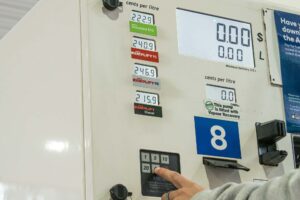Silex Systems says it has begun resuming production at its mothballed solar module plant in Sydney’s Homebush as it repositions its solar PV business to focus more on commercial and utilitiy scale projects.
The company says it has resumed limited production at the facility, which was suspended late last year following the dramatic slump in the rooftop solar market after the winding back of state and federal subsidies, and will gradually ramp up capacity as it unveils its new strategy. The decision to resume production comes as the Adelaide-based Tindo Solar also prepares to begin commercial production at its new facilities.
CEO Michael Goldsworthy said that solar PV business model is still being refined, but it will have a lower cost base. “There are quite a few angles to this plan,” he told RenewEconomy in an interview. “Commercial and utility scale solar are starting to evolve in Australia and around the Asia Pacific basin, and our strategy is to position ourselves to take advantage of that.”
Goldsworthy said there were numerous opportunities that the company was working on, and it would also likely be a bidder into the ACT Government’s proposed reverse auction for utility scale solar.
Goldsworthy said the market for commercial and utility scale solar PV was being driven by plummeting prices for solar panels, and rising electricity costs. “In that context, these projects are starting to drive themselves,” he said. He was reluctant, however, to make any predictions as to the size of the market.
Silex Solar is also recasting its rooftop PV business strategy, and this will be unveiled in coming months. It will continue to work with its Chinese partner, Hareon Solar, which last week completed a successful IPO in Shanghai that made it the second biggest solar PV manufacturer in the world, after the US-based First Solar, and the largest silicon-based solar manufacturer, ahead of Suntech.
The company on Monday released its results for the December half, which showed a net loss of $16.6 million for the company as a whole, including a loss of $8 million from the Silex Solar business ($3.8 million before restructuring costs and inventory write downs). The division’s revenues slumped to $4 million from $11.4 million in the same period a year earlier.
The Solar Systems division, which is developing unique concentrated solar PV technology, posted a loss of $5.5 million. It is building a 0.5MW pilot plant at Bridgewater in Victoria, and working on a 2MW grid-connected demonstration plant in Mildura, and is also confident it will reach agreements on 1MW demonstration plants in the Middle East and the US, which Goldsworthy said will act as showcases for the technology.
Translucent, which is developing “wafer substrates” that will have applications in LED Lighting, solar panels and the high voltage chip industries, and offer the possibility of using cheaper silicon-based solutions.
Silex Systems is the largest listed cleantech company in Australia by market capitalization, worth around $440 million, but Goldsworthy says around 90 per cent of that valuation is attributed to its uranium enrichment business – where the company is developing technology with GE and Hitachi. He blames the recent underperformance – it is down 50 per cent over the past 11 months– on the accident at Fukushima, but he believes the solar business could account for half the company’s value in future.
He says global demand for enriched uranium is expected to increase significantly over the next two decades, with the anticipated construction of a new generation of nuclear power plants. Significant expansion is anticipated in China and India, the US this month issued construction and operating license for two nuclear power plants in Georgia, a decision he said would kick-start the US nuclear power industry after a thirty year pause, and he noted that Britain and France had signed a new joint accord to further develop civil nuclear energy.








